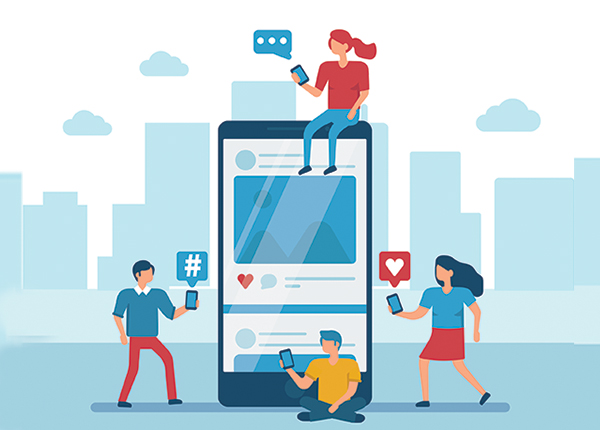The first six months of 2019 showed us a big shift in two areas – what consumers are looking for on social media, and what the platforms themselves are expecting from businesses and brands seeking visibility from clients and customers. Let’s take a look at five ways you can hop on to these trends for maximum visibility.
Build a “Tribe” with Facebook Groups
Are you hearing crickets on your Facebook Business page? There’s a reason for that. In May, Facebook CEO Mark Zuckerberg said, “Now we’re focused on building the digital equivalent of the living room, where you can interact in all the ways you’d want privately — from messaging and stories to secure payments and more.” He added, “We’ve redesigned Facebook to make communities as central as friends.” Zuckerberg described this process as a “journey to build a private social platform.” Part of how they plan to build these communities is to limit the visibility of Facebook Business Pages, hence the crickets. However, they have added many new features to groups. Build a Facebook Group related to your target or geo market, link it to your business page, and overnight you’ll see that you’ve built an engaged “tribe.” Within this group, share valuable content related to the topic, create polls, host events, create live videos, conduct trainings, etc. and you will see the engagement is much higher than the engagement that you get on your Business Page.
Social TV
IGTV and Instagram should be viewed as two separate apps, like Facebook Messenger and Facebook. The IGTV platform is designed for sharing and watching long-form videos. It’s similar to Instagram Stories, only your videos stay forever on your channel. Videos can be up to 10 minutes long. For larger and verified accounts, they can be up to 60 minutes.
Worried that you don’t have content?
Here are a few quick ideas:
- Reuse previously published video content from other platforms
- Create exclusive content (shared on IGTV only) to build a niche audience
- Host video tutorials to share real estate “tips” or insight
- Develop a community with a recurring show (maybe Wednesday Walkthroughs?)
- Host Q&A or Ask Me Anything (AMA) sessions to engage directly with customers
#Hashtags
Hashtags are one of the easiest ways to get visibility on social media. They organize content and make it searchable, which in turn allows you to be more discoverable. However, if you use the wrong amount, too few or too many, the platforms may choose to suppress your post. The data on this has changed a lot over the years, but in 2019, we’re seeing that if you use more than three hashtags on a Facebook Post, Tweet, or LinkedIn post, those platforms will not allow the post or tweet to get its maximum potential visibility. They want posts to be organic, so they’ve designed their algorithms to look at posts with too many hashtags as a “spammy” post. On Instagram however, utilizing too few hashtags is hurting you. Instagram allows 30 hashtags per post. How many should you use? 30! Instagram is not designed to suppress posts with a lot of hashtags, so by utilizing the 30 allowable hashtags, you are making yourself 30x more discoverable.
Trends are Trending
No, that’s not a typo. Participating in trends will garner visibility on any platform. Social media platforms not only post the content that you create, they read and analyze it. For example, let’s say I create a post on a holiday. Since I am referencing the holiday in the caption, the platforms will recognize that I’m being “relevant” or “on trend” and they will reward me for that by allowing that post to get more visibility. The use of hashtags helps but is not necessary for the platform to recognize your relevancy.
In-The-Moment Content
More and more brands are embracing personal, authentic and in-the-moment style content vs. overly produced, pre-packed content. Stories are capturing the hearts and mind of audiences everywhere. By 2020, social media developers at Facebook and Instagram expect consumers to spend more time watching stories, than scrolling through the newsfeed. Now is the time to start thinking about how you use video, stories and images to connect your audience with the human side of your business.


